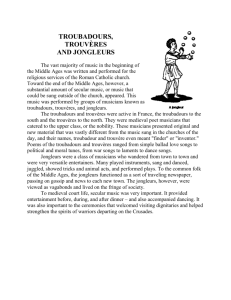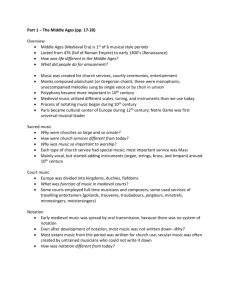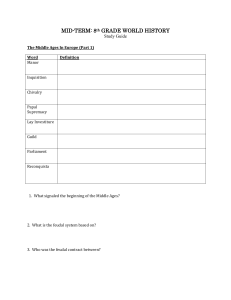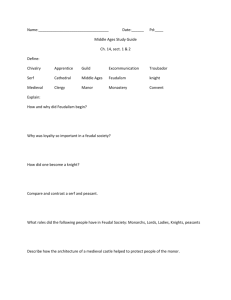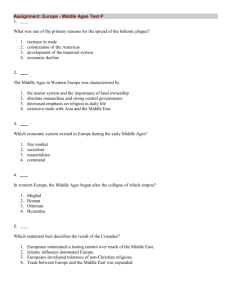The Middle Ages
advertisement
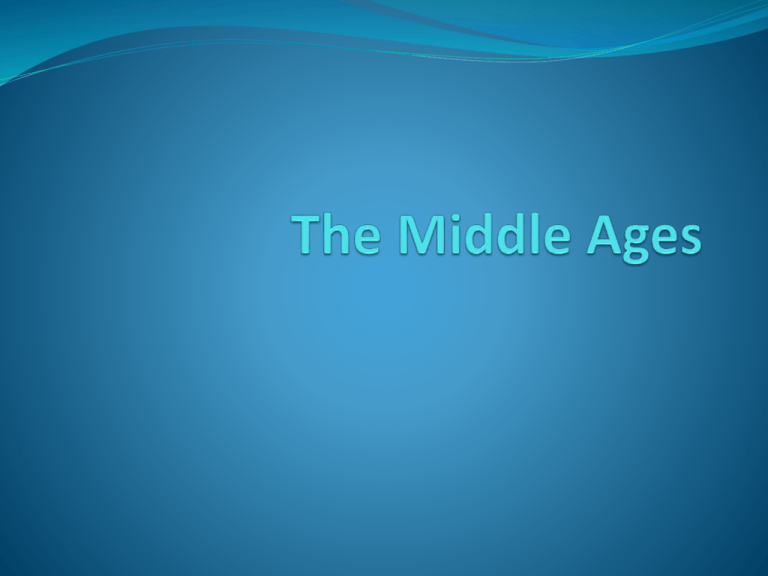
Middle Ages Art Art during the Middle Ages saw many changes and the emergence of the early Renaissance period. Byzantine Art was the name given to the style of art used in very early Middle Ages Art. This period was also known as the Dark Ages ( 410 AD - 1066 AD ). The Dark Ages were followed by the Medieval era of the Middle Ages (1066 - 1485) Notes:Middle Ages Art - Byzantine Art Pietistic painting (religious art) Artists were members of religious houses such as monasteries There were no sculptures as these were looked upon as a form of idolatry Sombre tones Byzantine Art was totally flat - one dimensional. There was no perspective There were no shadows Figures in Byzantine Art were generally depicted frontfacing Byzantine Art featured long, narrow and solemn faces There was no attempt to portray realism in sombre Byzantine Art Medieval Gothic Art - Advances of Art in the Middle Ages Brighter colors Sculptures Metal work in the form of bronze art Middle Ages art in the form of stained glass windows Move towards realism The development of perspective and proportion in Middle Ages art The use of shadows and light New ideals of naturalism Creation of a sense of pictorial space The use of symmetry in Middle Ages art Changes in subject matter including the depiction of animals and mythological scenes “Goth” Middle Ages Art by Type Middle Ages art increased from the type of art depicted in Pietistic painting (religious art) in the form of illuminated manuscripts, mosaics and fresco paintings in churches. Middle Ages art included the following art by type: Ceramic art Mosaic Sculpture Engraving Stained Glass art Heraldry Illuminated manuscript Metalwork especially bronze art Silversmith and Goldsmith and new forms of jewelry Painting Fresco Heraldry Medieval Music In the eleventh and twelfth centuries Troubadours, Trouveres and Minstrels were the poets and musicians who influenced Medieval Music. The troubadours and minstrels sang songs of courtly love and romance. Noble ladies of the Medieval period were famous for their patronage of Medieval Music. Eleanor of Aquitaine married King Henry II of England in 1152 and brought her love of music and the troubadours to the English court transferring the tradition to England. The Troubadours The Troubadours were originally travelling musicians. The early Troubadours travelled from one village to the next and many also travelled abroad. The role of the Troubadours changed to part of an elite society of royalty and nobles. The themes of the songs sung by the Troubadours mainly dealt with Chivalry and Courtly love romantic ballads. In Germany, the troubadours became Minnesingers, or singers of love songs. The German minnesingers differed from the troubadours in that they accompanied their songs on the viol. The Trouveres The Trouveres were troubadours of nobler birth with finer imagination, including kings and nobles. They were a school of poets who flourished in Northern France and Europe from the 11th to the 14th century.

